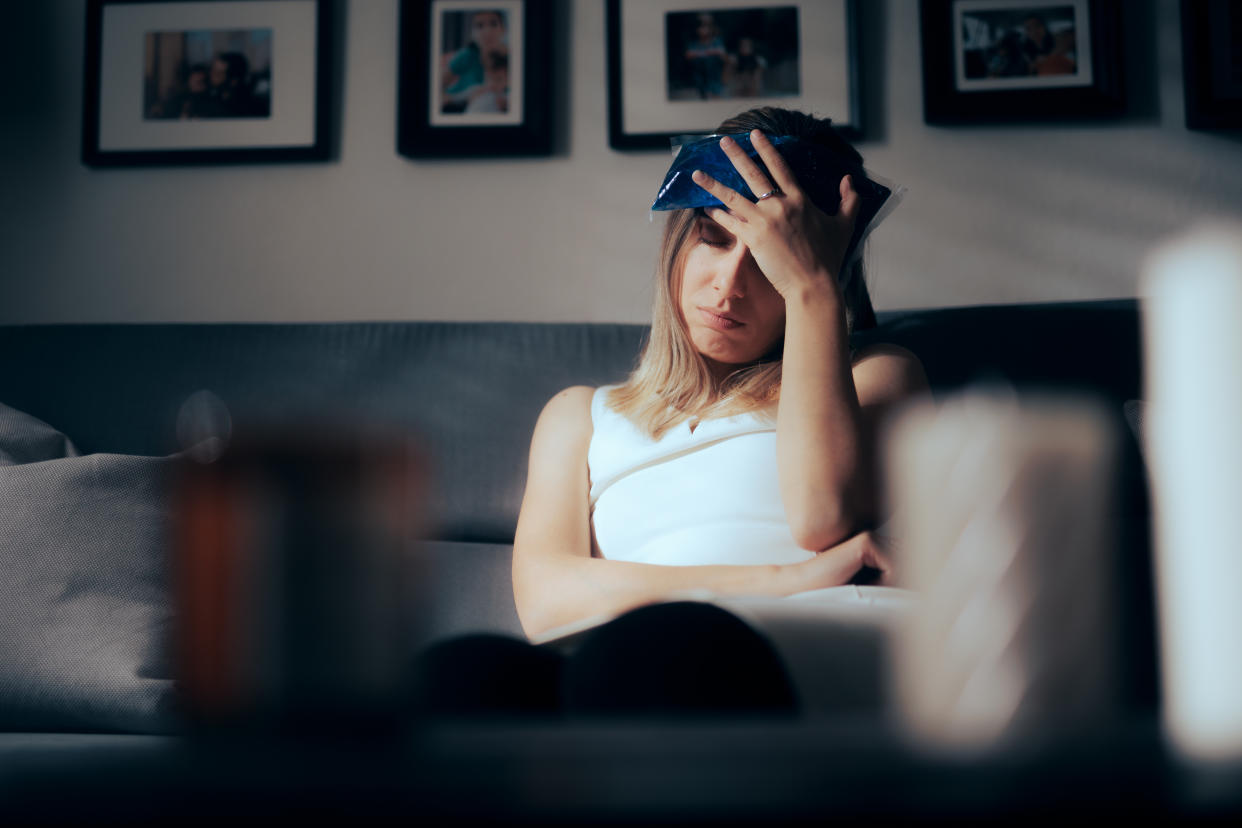What’s a migraine cap and how do they provide relief for headaches? Experts explain the trend.

If you have migraine disorder — characterized by severe headaches, among other symptoms — you might be desperate to find relief. And, based on the searches that pop up on TikTok, you’re not alone.
Lately, many TikTokers are swearing by the virtues of wearing a migraine cap — a gel-filled sleeve that’s worn around the head, neck and eyes to provide cooling relief — and calling them a “must-have” for people who suffer from severe head pain. “This mask has saved me so many times,” one person gushed in a recent TikTok.
But how does a migraine cap work, and what do experts make of it? Here’s what you need to know.
What is a migraine cap?
A migraine cap, also known as a migraine mask, headache hat or an ice cap, is a wearable sleeve designed to wrap around the head to provide relief from resulting headaches. It’s most often a form of cold therapy (although some are advertised as dual purpose and can be heated) as it’s filled with gel or another material meant to retain cool temperatures while worn.
Dr. Thomas Pontinen, anesthesiologist, interventional pain medicine specialist and co-founder of MAPS Centers For Pain Control, tells Yahoo Life that a migraine cap can be offered as a type of “non-medicated relief” to someone who is looking to avoid medication.
Does it work?
Research confirming the efficacy of cold therapy for migraine relief is limited, however, promising, Pontinen says.
“Cold therapy causes blood vessels to constrict, which decreases blood flow and inflammation. I like to think of migraine caps as a tool that can be used to slow down your head,” says Pontinen. “It can give a kind of numbing sensation combined with a light pressure that very often offers relief from pain.”
Dr. Thomas Berk, medical director of Neura Health and a neurologist and headache specialist based in New York City, tells Yahoo Life that the cold is used to “overwhelm and block pain transmission in the cerebral cortex” of the brain.
Adds Pontinen: “In cases where there’s inflammation in and around the head, or even a lack of circulation, a migraine cooling cap can be helpful beyond its numbing capabilities.”
He says that it’s best practice to either keep a cap in the freezer, making sure to let it sit out and come to a comfortable temperature before use, or to place it into the freezer shortly before using. “Applying ice to the head or neck can still be helpful in a pinch, but a cold cap is usually much better because it provides some light pressure around the head, neck and eyes, uniform coverage and it stays attached to you regardless of what you’re doing or what position you’re in,” he explains.
A 2022 systematic review of six studies suggests that cold intervention reduces painful migraine symptoms as they’re happening, as opposed to being a means of prevention. Relief of migraine symptoms outside of headache, including nausea, vomiting, vertigo or visual or sensory disturbances (called auras), wasn’t demonstrated.
Who might benefit from one?
“I recommend cooling caps to many of my patients who experience headaches because they’re relatively safe, accessible and effective,” says Pontinen. However, that doesn’t mean that it will work for everybody.
“The causes and mechanisms of migraines vary from person to person and are not fully understood, which means the efficacy of cold caps can vary as well,” he says, noting that there are some people who might feel worse from using one. “Vasoconstriction can be a potential trigger or contributing factor to migraine episodes, so if using a cold cap seems to make your pain worse, be sure to stop use immediately as they may not be a good fit for you.”
Dr. James Charles, a neurologist, clinical neurophysiologist and director of headache medicine at Holy Name Medical Center in Teaneck, N.J., tells Yahoo Life that the best practice is to schedule a visit with a specialist to identify treatment “for acute migraine attacks and for prevention of frequent migraine attacks.” He also notes that exercise, sufficient sleep, eating consistent meals, developing coping mechanisms for stress and treating any underlying medical problems like hypertension and sleep apnea are helpful as larger preventative measures.
“It’s important to note that a headache hat is one tool in the toolkit. So while it may provide temporary relief, it will not stop a migraine attack,” says Berk. “If combined with other tools and treatments and acute medication, the person likely will have a better outcome.”
